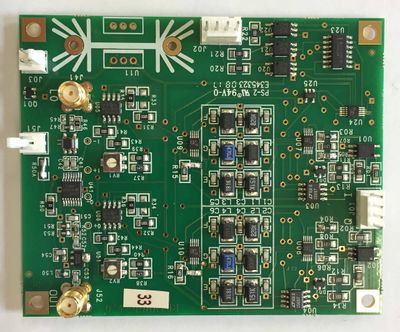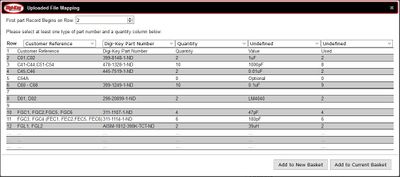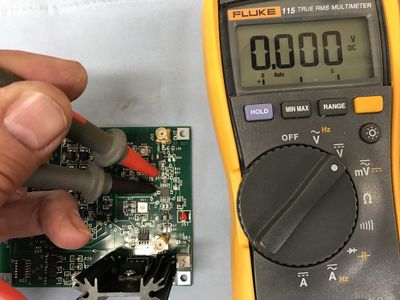Filter Modulator build
There are 2 ways to get a Portsdown filter modulator board which is the only custom hardware required for the project.
Ready built and tested Portsdown modulator boards will be available from the BATC shop This is the easiest way to get one - current estimate for delivery is late February 2017 .
For those wanting to construct the board themselves, the blank PCB is available from the BATC shop
Note: Building the board is not a beginner's construction project as the PCB contains 129 surface mount parts including ICs in dense packages. If you are not used to SMD assembly, we suggest you buy the assembled PCB from the BATC shop.
Parts List
Below is a bare bones parts list, or Bill of Materials, as an .xls file which you can upload to Digikey.
If you wish to make any changes such as select the larger heatsink option, use an external regulator, a different heatsink or delete components you already have, simply amend the item in the "Quantity" column before uploading to Digikey.
To use the facility, sign in to digikey (you will need to register first) and go to my basket and follow these instructions. You then need to make the following changes:
- Change the "First part Record begins on Row" to "2"
- Use the column drop down boxes to match the first 3 column titles to the .xls file. Note the final 2 columns are for your reference only - on some tape and reel components you are ordering more parts than required as this is the most economical price break - you can change these in the .xls if you require but Digikey will then mark them as a query item.
Once finished the Portsdown BoM should look like this:
Then simply checkout and pay Digikey and it will automatically order all the parts you require to construct the board which will arrive bagged up marked with circuit references. This is the recommended way to order your parts if you decide to build the board yourself, but you can of course order the parts from your own supplier.
Board information
Soldering the small ICs
Colin G4KLB has a done a short video showing how to solder the small ICs on to the board - it's available on the BATC Youtube channel here.
Testing the board
Once you've completed building your own board you will have to test it - we're currently working out the process but the outline will be something along these lines:
- Check 5v rail current before fitting semiconductors:
Install Q01 (Reverse voltage protection) and U11 (5V reg). The regulator tab is at 0V so no insulating kit is needed - you will need a suitable M3 nut and screw. In order to leave room to work when fitting subsequent parts you may wish to leave the heatsink unsoldered at this stage so it can be removed easily for access.
Apply 7-8V to J03 observing correct polarity - the pin nearest the corner of the board is +V. Probe the regulator output with a meter - you should measure 5V relative to ground.
The current measured in series with the power lead to J03 and no other semiconductors fitted should be about 8.5mA.
*Check 5v current rail after fitting semiconductors.
Testing the system
- Connect all the modules together
- Go through initial software set up procedure and set to 1255 MHz / 2Ms (chosen because all sat rxs can receive that) using touchscreen or console menu.
- Check AD4351 is working – listen on selected frequency with a scanner / rig if you don't have a counter.
- Adjust balance pots – Select test signal from the console menu. Place a voltmeter on +Q and -Q and adjust pots for 0 Volts - you will have to do this several times to get a true balance.
- Check for signal received picture on the satellite rxr – you may need to rescan for new signals.
- If you have a minituer system, check for MER readings and make final balance adjustments.
We are currently working out how to check for correct RF level output.


